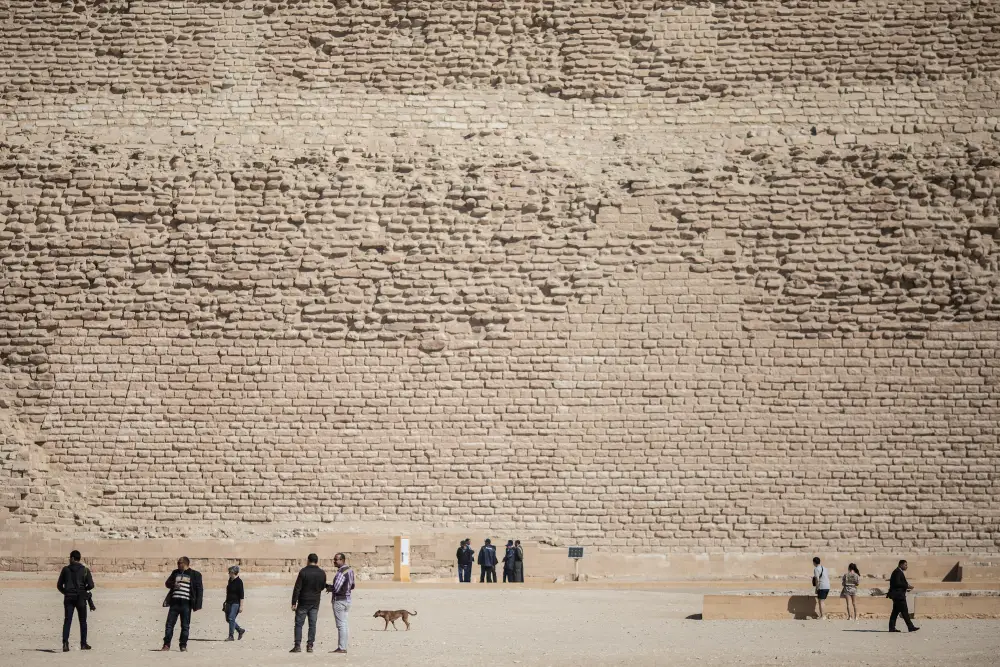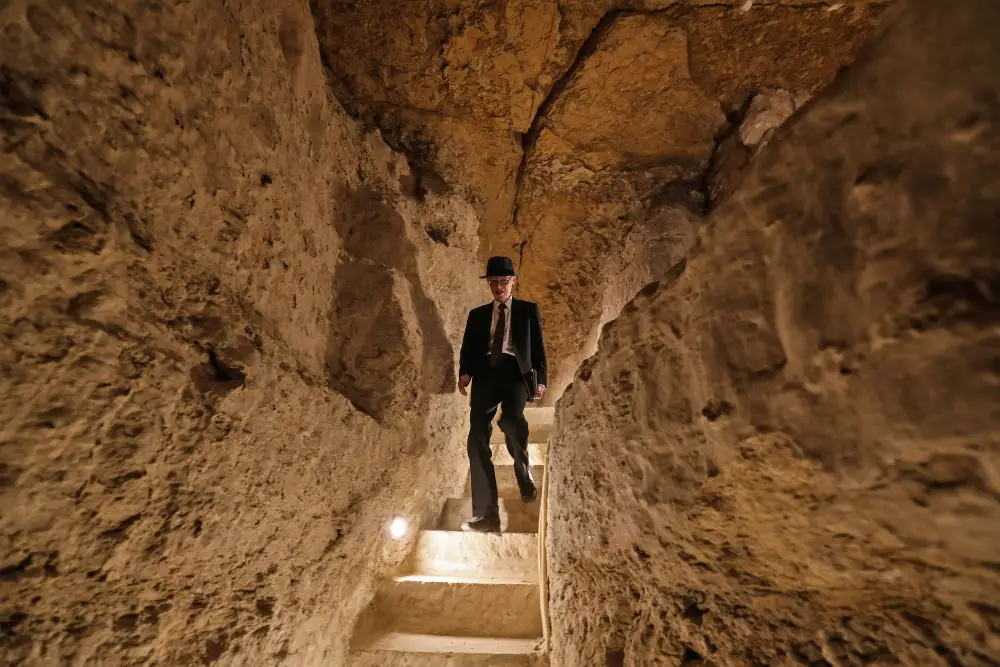
It's been two months since I've returned from my pilgrimage to Egypt, and I still hardly know where to start.
My first history lesson was showing up in Egypt seeing the word "Misr" written on buildings not knowing what that meant. Interestingly enough, this country is not actually called "Egypt" in Egypt. Egypt as we know it isn't even the original name of the land. According to what history we do have, the land was originally called KMT (pronounced Khemet), meaning "Blac Land" from the rich and fertile soil surrounding the Nile. It wasn't until after the Greeks invaded Egypt that KMT was referred to as Egypt, named after the Greek king Ægyptus. There's a long history of invasions but eventually Egypt became an Arab country, renamed Misr.
The original spoken and written language of the Ancient Egyptians, or really the Khemetians, had been completely lost as the country moved through its many transitions of ownership (with the exception of a few designated wisdom keepers located within the country, and other tribes scattered throughout Africa who still to this day use hieroglyphs).

It wasn't until 1822 when the Rosetta stone was deciphered, that we had a path forward in trying to understand what the hieroglyphs meant. The interpretations that were made in 1822 are what all modern day Egyptologists go off of. The problem is that the interpretations are erroneous and the translations have been been updated.
I believe Jean-François Champollion did his best at translating the Rosetta Stone, but there is a lot of room for error when a written language only used consonants (for example, how can we really know they pronounced KMT with E's and not other vowels that give it an entirely different meaning?). The other problem with the basis of his translation is that the lost culture had just as an advanced (if not more) understanding of astronomy and physics as we do today; an understanding that wasn't available to Champollion in 1822. For example, there is a symbol that looks like "wwww" that Champollion translated as a water because it looked like a wave, but the Dogon tribe who still uses that symbol in their culture today understand that symbol has to do with electromagnetic force, electromagnetic waves. Here are some screenshots I've taken from Laird Scranton's book "Sacred Symbols of the Dogon: The Key to Advanced Science in Ancient Egyptian Hieroglyphs".
As you look through some of the meanings of those symbols, you'll see how deeply immersed in physics the language is. Luckily for me, my fiancé actually has a physics degree so on the bus between Abu Simbel and Aswan, I basically gave him the book, trapped him in the window seat, and told him don't come out until you're done. And it worked! He was able to look at the hieroglyphs through a very different lens and pick up on entirely different teachings than anyone else in our group.

Champollion's translation was specifically being used to interpret the phonetic written language of KMT, which was used mostly by royalty and high priests and priestesses. It is not the same as the pictorial hieroglyphs. You can see this for yourself in this photo I took in Abu Simbel. Notice the small carvings in the center tablet, carefully written between lines as compared to the depictions to the top, left and right of the center tablet. The center tablet is a phonetic language, whereas the hieroglyphs are not.

Before this trip, I thought all my answers would come from the Egyptologist that was hired for our tour. Even though he was highly educated and wanted to help by sharing his knowledge, he knew nothing about the Dogon tribe, or how it was possible that the limestone surrounding the Sphinx had water erosion that wouldn't be possible unless it were at least 12,000 years old.
As it turns out, the Egyptian government requires all tours share the "official" story to the extent that the guards at each location will stop your tour if someone starts sharing information that doesn't go along with the "official" story they want tourists to believe. Why is there so much effort to perpetuate misinformation?
According to the Egyptian government the "official story" is that the ancient Egyptians practiced building pyramids, but weren't as good at it by the time they built the "oldest" pyramid in Egypt (2,673BC), which is the pyramid of Djoser at Saqqara. Here are photos of Djoser (left) compared to the Great Pyramid (right). I'll let you decide for yourself if you believe the pyramid on the left is only 170 years older than the pyramids on the right, or if perhaps you believe the Great Pyramid is thousands of years old and perhaps inspired future generations to attempt to mimic their mastery.

The logic, according to a sign I found in the Great Egyptian Museum, states: "it is clear that we may assume that the mathematical tools needed to achieve such engineering work are either not preserved or not yet found. Thankfully, we have architectural tools from later periods, including measuring tools (cubits) and levelling tools (triangular levels, plumb levels, right angles)..." To the right is a photo I took of the referenced tools that were recovered from later time periods. Based on the logic that Djoser is older because it is less advanced that the pyramids of Giza, shouldn't the tools found later be more advanced than what was needed to build the Great Pyramid?

In 1977, a Japanese team tried to build a scaled down version of the Great Pyramid using cranes, helicopters, and lots of technology that wasn't around in 2,500 BC. At the conclusion of their experiment, they said "We now know how the pyramids were NOT built".

In case you're still on the fence, let me tell you about a very interesting artifact housed in a museum that most tours don't visit. This decorated Ostrich egg is housed at the Nubian Museum in Aswan.
Besides our group, there were maybe a total of 10 other visitors there during our 2 hour visit. The museum is not as popular and often overlooked. However, this Ostrich egg has been proven to be at least 7,000 years old, dating back to 5,000 BC. There are no other triangular structures all in a line next to each other northwest of the Nile, besides those found at Giza.
Despite the failed experiments to replicate the pyramids, despite never having found any tools that could have possibly constructed the pyramids (at least that the public has been made aware of besides the Schist Disc), and having an artifact from 5,000 B.C. that depicts 3 triangular structures in the northwest, the "story" we get is that these incredible, harmonic structures were built by slaves over the span of 30 years.

Even the shafts of the Great Pyramid are tuned to musical notes and specific frequencies. They're sound chambers. Perfectly resonant sound chambers based off of highly advanced mathematics, and sacred geometry. When you hit the right note you will not only hear the resonance effortlessly echoing through each room, but you'll feel it in your body, too. If you're holding a water bottle, you'll observe the cymatics vibrating the entire bottle. It doesn't matter where you are; in the shafts, the Grand Gallery, Queen's Chamber, or King's Chamber, they are all tuned to resonate specific frequencies. Our group had 4 hours of private time in the pyramid, so we had plenty of time to play around with different tones. However, when you lay in the sarcophagus and have people tone into the granite box with you in it, that's something else entirely!
While I was beaming ear to ear moving the energy throughout my body, I had to cut my turn short because I was certain if I went any longer I wouldn't have a solid body. It felt incredible, like my individual cells were vibrating at the speed of light and were about to become unglued. It felt like I was emitting light. Like I was becoming light. Like I could have teleported very easily had I stayed in another 3 minutes. I say this with equal amounts of excitement and respect.
When you go to Egypt yourself, and see the architecture firsthand you know without a doubt there was an ancient civilization that was more advanced than we are today. I personally think there is more to the story of why, but for now, we'll have to sit with some mysteries yet to be solved.

Keep an eye out for my next article about Ancient Civilizations where I'll share more about the Atlantean temple in Abydos, and the mysterious basalt stone boxes, and what the clients under hypnosis channeled about it!
Katie Christensen is a teacher on Insight Timer, a past-life regressionist, and hypnotist trained in Dolores Cannon's technique (QHHT) and Beyond Quantum Healing. She also hosts the Meetup Group Awakening Through Explorations of Consciousness. To find out more, visit ConnectedFromWithin.com













Comments